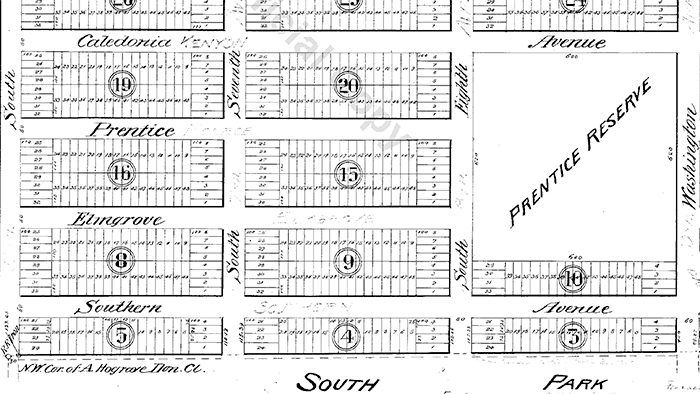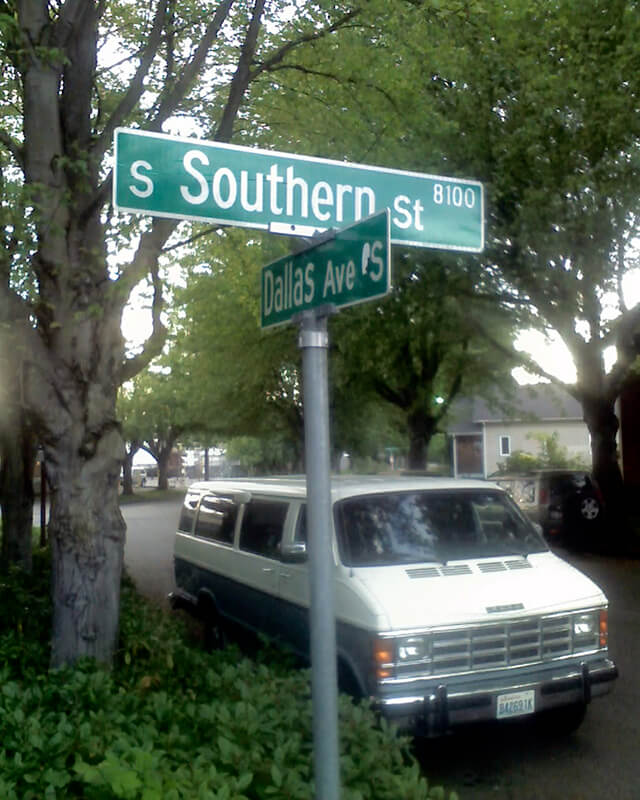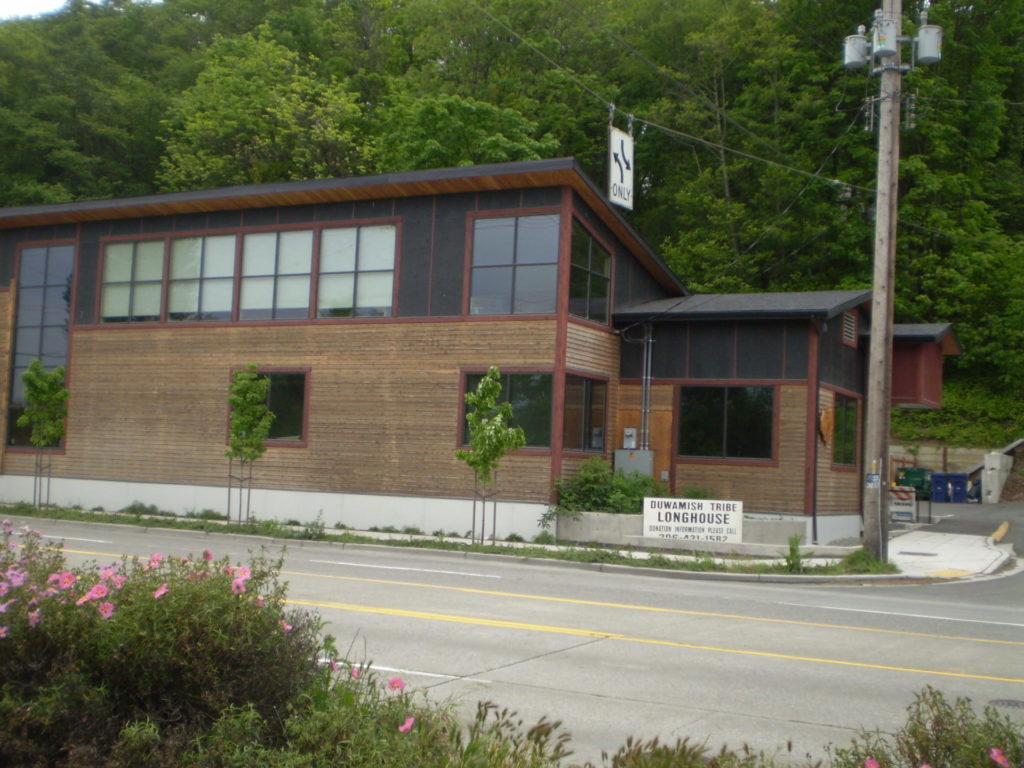As you might expect, this street is so named because it runs along the west bank of the Duwamish Waterway. However, it only does so for about ⅖ of a mile, from S Webster Street east of 5th Avenue S to a dead end on the river just north of a path to t̓ałt̓ałucid Park and Shoreline Habitat (formerly the 8th Avenue S street end, just north of S Portland Street). It is by no means a prominent street, contrary to what such a name usually implies (Los Angeles, Manhattan, Ottawa, Spokane). In this way it is similar to Seattle’s S Front Street and S River Street. Why is this?
Also as you might expect, it’s for the same reason Front and River Streets are relatively unimportant: the rechanneling of the Duwamish River that started in 1913. Originally Duwamish Avenue in the 1891 plat of River Park, as seen in the image below, Riverside Drive used to curve around a bend in the river. When the river was straightened, the road was cut off right in the middle and became a Riverside Drive to nowhere.
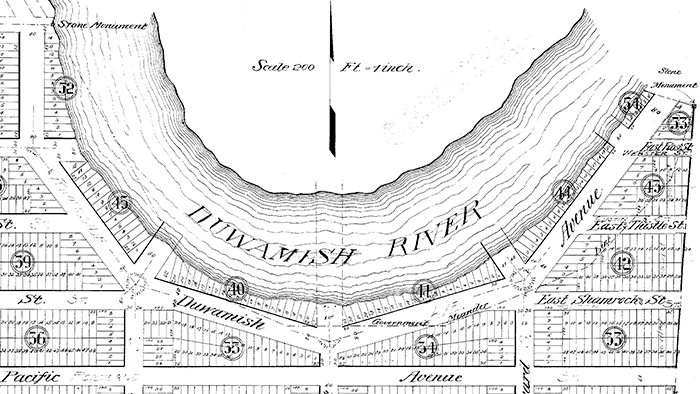
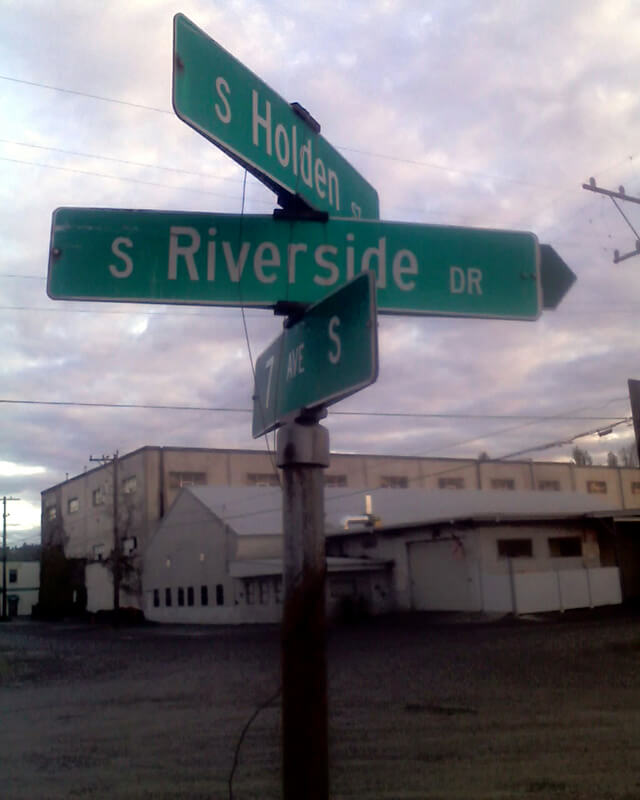
Born and raised in Seattle, Benjamin Donguk Lukoff had his interest in local history kindled at the age of six, when his father bought him settler granddaughter Sophie Frye Bass’s Pig-Tail Days in Old Seattle at the gift shop of the Museum of History and Industry. He studied English, Russian, and linguistics at the University of Washington, and went on to earn his master’s in English linguistics from University College London. His book of rephotography, Seattle Then and Now, was published in 2010. An updated version came out in 2015.
